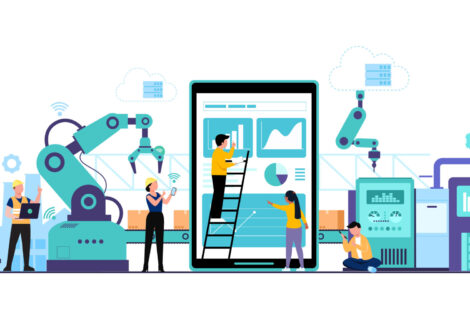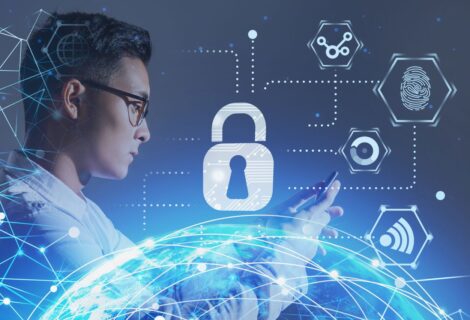How to Prepare An Agile IT Strategy For Remote Working
Amid COVID-19, the economy and numerous industries have turned to technology to play an even greater role in enabling our businesses to maximise the potential of our remote workforce and support our working lives. As businesses roll-out new solutions, it’s crucial we adopt an agile IT strategy to help us through these unprecedented times so that we can transform businesses now and for the future.
The ever-changing global COVID-19 pandemic makes it hard to know how best to prepare, run and adapt our businesses. This applies both in the short-term as we assess our current situation, and longer-term, when we may need to partly move or completely shift our activities from offline to online and increase our flexible working.
As we adapt to a more digital world, an environment that contains more digitally-advanced IT strategies will become the go-to gold-standard approach.
An IT Strategy For Today
Unlike a traditional IT strategy, an agile IT strategy depicts the plan for a business’s technology for the next 6-24months. Once the planning steps have been agreed and implemented, then business capabilities can be decided and the relevant technology considered.
The new strategic roadmap should explore which business initiatives are priorities and what technology is needed to make these a reality. The need for maximum flexibility to adapt to challenges, market fluctuations and business opportunities is crucial.
Analyse your current IT situation by reviewing the technology, processes and systems you have in place. Ask whether these are the most effective and beneficial in enabling you to react quickly and digitally transform.
What We’re Seeing From Technology
During COVID-19, we’re seeing many areas of technology shift and change to meet the needs of consumers, institutions and workforces. Here we highlight some examples.
- Online shopping
For consumers, convenience is key. Looking ahead, online shopping supported by a strong and vigorous logistics system, digital and contactless payments and computer-controlled deliveries are expected to be must-haves for businesses. We have seen how these shopping methods have been adopted as preferred operations to avoid the spread of COVID-19 and it is likely that companies will strengthen their technological infrastructure to offer these to consumers.
- Distance learning
We’ve also seen how distance learning has enabled educational institutions to remain active. Remote working facilities, along with artificial-intelligence-enabled robot teachers, virtual reality, augmented reality and 3D printing are also widening the scope of possibilities.
- Supply chains
Core technologies of the Fourth Industrial Revolution, such as Big Data, cloud computing, the Internet of Things (IoT) and blockchain are building a more resilient supply chain management system for the future. It is doing this by enhancing the accuracy of data and encouraging data sharing. The Fourth Industrial Revolution is fusing the technological, biological and physical spheres to evolve how we live, work and communicate.
The Rise of Remote Working
But really the biggest commercial and corporate shift has been in remote working. At the beginning of March, ahead of lockdown, AIT Systems looked at how remote working was talking off and how businesses could make it really work.
Remote working has surged during the pandemic as many companies have continued their business operations by enabling their teams to work from home. Although employees in the UK have had a statutory right to request flexible working since 2003, before COVID-19, only approximately 5% of the country’s 33 million workers mainly worked from home. Yet as many employees and companies see the benefits, remote working may well become the norm post-COVID-19.
Technologies including cloud technology, virtual private networks (VPNs), voice over internet protocols (VoIP), virtual meeting applications, work collaboration tools and facial recognition technology will climb up the priorities list to help form an agile IT strategy that supports remote working.
And so, for companies, this raises a number of considerations when honing their IT strategy. Namely, their infrastructure, information security, data management, system updates and tech support — all in the context of remote working.
While for some businesses, moving over to remote working may have been simple and seamless, for others who did not formerly have this as part of their IT strategy, it can seem a daunting and significant leap into the unknown.
Now more than ever, businesses need to strengthen and prepare their IT strategy to proactively and effectively support remote working.
Overall simplicity is key. Putting in place a remote working strategy needs to start with the right technology. Therefore, it’s important that all applications and software belong to one provider, and are placed on one platform. Usability is crucial as teams need to adapt quickly.
The roll-out of 5G also coincided with the time we needed it most, enabling digital readiness to move forward as much as is possible. As technology governance is set to revolve more around inclusivity and a human-centred approach, appropriate technological infrastructure will be necessary to move into this next era of business.
We take a look at the core considerations for businesses when forming an agile IT strategy that allows for effective remote working:
- IT infrastructure
The pandemic has placed extra pressure on infrastructure, with networks and data centres working to meet the needs of more businesses operating online and employees connecting to corporate systems over the internet.
To help make the transition as smooth as possible, businesses need to consider their bandwidth size, firewalls (and up-to-date patches), backups, home WiFi and video collaboration apps to ensure strong network connectivity to enable ongoing business operations.
Software as a Service (SaaS) and Desktop as a Service (DaaS) capabilities, along with other cloud technologies enable many businesses to seamlessly move between remote and physical business environments, without impacting culture or communication.
Load balancing, which relates to balancing the volume on a network, has become necessary and more sophisticated with increasing numbers of people accessing desktop, files, emails and cloud apps from outside their physical network. Load balancing, software-defined wide-area networks and web performance optimisation help enable businesses to scale up applications regardless of their workforce’s location. The network and applications, however, must be secure and so authentication to validate a user is key to ensure only eligible people can access the network.
- Security
With the ever-present threats of cybersecurity, corporate networks need to broaden their security processes beyond a firewall, to take the relevant precautions against malicious activity.
The Information Commissioner’s Office (ICO) has revealed several ways businesses can ensure protection from cybersecurity threats. Making sure devices are fully updated with the latest operating systems and key software updates is key. The public body also encourages people to use work devices if they are available, as BYOD (bring their own device) policies may present greater threats to IT security. If this is not possible, and BYOD is in place, then the ICO recommends businesses encourage employees to only use work email accounts and update their passwords regularly.
User and entity behaviour analytics (UEBA) is a reliable way to quickly identify anomalous behaviour. The technology learns and establishes benchmarks for normal user behaviour, such as where that remote team member typically logs in from geographically. It then alerts security teams to any activity that deviates from that known norm.
Robust passwords or multi-factor authentication (MFA) are also vital when providing remote desktop access to remote workers. The best practice is to ask all employees to reset their passwords as they connect remotely and prompt them to choose a new password that complies within strong password complexity guidelines.
When it comes to a virtual private network (VPN), businesses need to maintain updates and patches, particularly during this period of change to avoid security gaps. Attacks of this nature can produce large volumes of traffic that fill up the pipe and disrupt the VPN protocol. Distributed Denial of Service protection can prevent service disruption of this kind.
- Data Protection
Ensuring employee and customers’ data is not compromised is a top concern for businesses making the shift to remote working.
Data loss is a key worry relating to BYOD policies. But data loss prevention (DLP) technology can considerably reduce this concern by providing businesses with greater data control. DLP technology prevents any unauthorised attempts to enter, copy or share sensitive information. Businesses can also maximise security by enabling their remote workers to use a secure cloud solution for document and password storage.
- Document Management
Decision-making processes should also remain documented and held in a safe, accessible place for all relevant personnel to access.
Document management and automation enable managers to have transparency, compliance and an intelligible and relevant workflow.
For businesses, document management and automation software, such as Net Documents, a cloud-based document and email management service, ensures leaders have visibility over their business via real-time updates. Feedback on any unworkable processes, areas for improvements and hold-ups is invaluable. Effective procedures to tackle such problems can then be implemented regardless of a workforce’s location.
By tracking the complete workflow process, document management can improve data security compliance by providing a complete audit trail and prioritising consistency and automation based on predetermined business rules. This leaves businesses to only focus on their most important tasks and projects.
- Training and Online Resources
Training sessions via video conference calls can be made available to all employees, encouraging teams to have the opportunity to ask questions on new technology and to get up and running as quickly as possible — helping both security and productivity.
Remote training can even send simulated phishing emails to unsuspecting users to test how they respond in a controlled and safe way. This can provide useful information to your team on being vigilant and avoiding the pitfalls of security risks.
How AIT Systems Can Help
Many businesses and IT departments will be going through a challenging and unprecedented time. If you would like any support on evolving your IT strategy during this time or to prepare your business for remote working, AIT Systems is here to help.





